When I talked with my mum on the phone some weeks ago, she asked me if I had an idea for a recipe. She had a rye sourdough fermenting in the kitchen and was now looking for recipes (I know where I got my tendency to start a preferment before deciding what to bake.) I just baked a delicious Wheat-Rye bread and some minutes later I had drafted a “sibling” of this recipe which fits to the preferment and sent it to my mum. The next day she send me some pictures and wrote that they all liked the bread very much, so I kept the recipe in the back of my head as “to be baked”.
When I was thinking what to bake as move-in present (in germany the classical gift for a new flat/house is the symbolic bread and salt), I remembered the recipe and I finally I baked it. And I like it as much as its faster sibling. It is an aromatic bread with crisp crust and tender crumb. It is a perfect everyday bread and tastes delicious with sweet things like honey and jam as well as with hearty cheese.

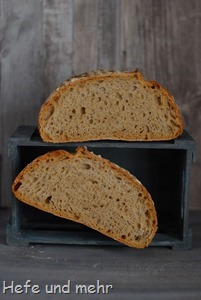
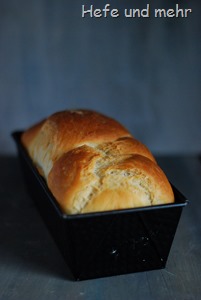 I do both rather seldom: Baking soft sandwich bread and baking during the week. Normally my bread baking day is at the weekend and so I need special circumstances to take the flour from the cupboard during a working week. But an tooth emergency leaded to a small oral surgery and subsequently to chewing problems. After three days of soups and purees I was longing for a really soft bread which is easy to chew.
I do both rather seldom: Baking soft sandwich bread and baking during the week. Normally my bread baking day is at the weekend and so I need special circumstances to take the flour from the cupboard during a working week. But an tooth emergency leaded to a small oral surgery and subsequently to chewing problems. After three days of soups and purees I was longing for a really soft bread which is easy to chew.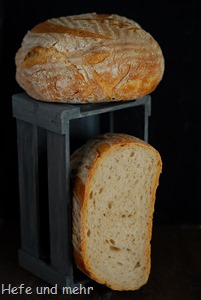
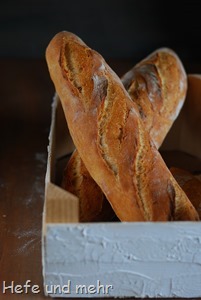 Another wish for the Bread Baking Course was Baguette. And
Another wish for the Bread Baking Course was Baguette. And 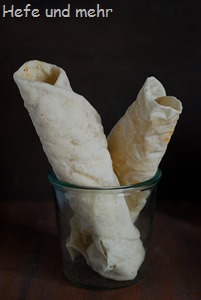 Do you know this? You take a photograph, and another one, and another one. And nothing looks good. This Arabian flatbread, Chubz, is one of this cases. It is so … flat. After ten minutes of unsatisfying pictures my beloved one turn nervous and declared that bread and
Do you know this? You take a photograph, and another one, and another one. And nothing looks good. This Arabian flatbread, Chubz, is one of this cases. It is so … flat. After ten minutes of unsatisfying pictures my beloved one turn nervous and declared that bread and 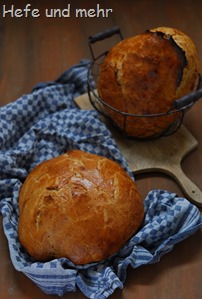 “Eingenetztes Brot” would be Net-Bread if translated literally. But the origin from the word “eingenetzt” does not stem from the German “Netz” (net) but from “Nass”, which means “Wet”. And making the bread is wet indeed. The sticky dough is easiest to handle when hands and tools are really wet. When the bread is placed in the oven its surface is wet as well. This helps to create the shiny crust which is characteristic for this bread. To get the soft dough in the oven without accident, a so called “Schapf”, a kind of ladle, is used traditionally. Even in my rather big kitchen collection, there is no “Schapf” and so I used a small salad bowl instead. And this worked fine!
“Eingenetztes Brot” would be Net-Bread if translated literally. But the origin from the word “eingenetzt” does not stem from the German “Netz” (net) but from “Nass”, which means “Wet”. And making the bread is wet indeed. The sticky dough is easiest to handle when hands and tools are really wet. When the bread is placed in the oven its surface is wet as well. This helps to create the shiny crust which is characteristic for this bread. To get the soft dough in the oven without accident, a so called “Schapf”, a kind of ladle, is used traditionally. Even in my rather big kitchen collection, there is no “Schapf” and so I used a small salad bowl instead. And this worked fine!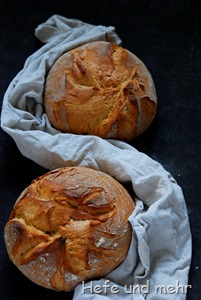
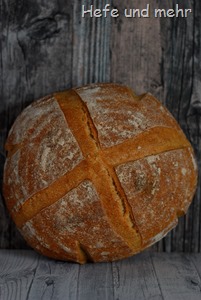 The new Sourdough is ready to bake our first sourdough bread. As a freshly raised sourdough is still a little bit weak, it makes sense to do one (or even better two) sourdough feedings at warm temperature to
The new Sourdough is ready to bake our first sourdough bread. As a freshly raised sourdough is still a little bit weak, it makes sense to do one (or even better two) sourdough feedings at warm temperature to 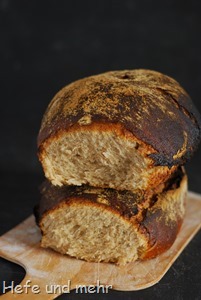 There are a lot of whishes’ for recipes for the bread baking course: the swabian “genetzes” Bread, Baguette, Bread with heirloom grains, yeasted cake, Westphalian Farmer Loaf, Sourdough and Sourdough breads, Salzstangerl, Bagel and Basler Brot. And there are still my personal wishes, a whole grain bread and a multi grain bread. We are not running out of recipes or ideas 🙂
There are a lot of whishes’ for recipes for the bread baking course: the swabian “genetzes” Bread, Baguette, Bread with heirloom grains, yeasted cake, Westphalian Farmer Loaf, Sourdough and Sourdough breads, Salzstangerl, Bagel and Basler Brot. And there are still my personal wishes, a whole grain bread and a multi grain bread. We are not running out of recipes or ideas 🙂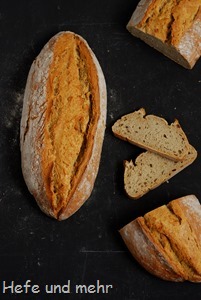 So here is now the promised Spelt bread. I know that many of the readers of this blog like to bake with spelt, but baking with spelt flour is a little bit more challenging then baking with wheat flour, so the recipe comes relatively late in my bread baking course.
So here is now the promised Spelt bread. I know that many of the readers of this blog like to bake with spelt, but baking with spelt flour is a little bit more challenging then baking with wheat flour, so the recipe comes relatively late in my bread baking course.